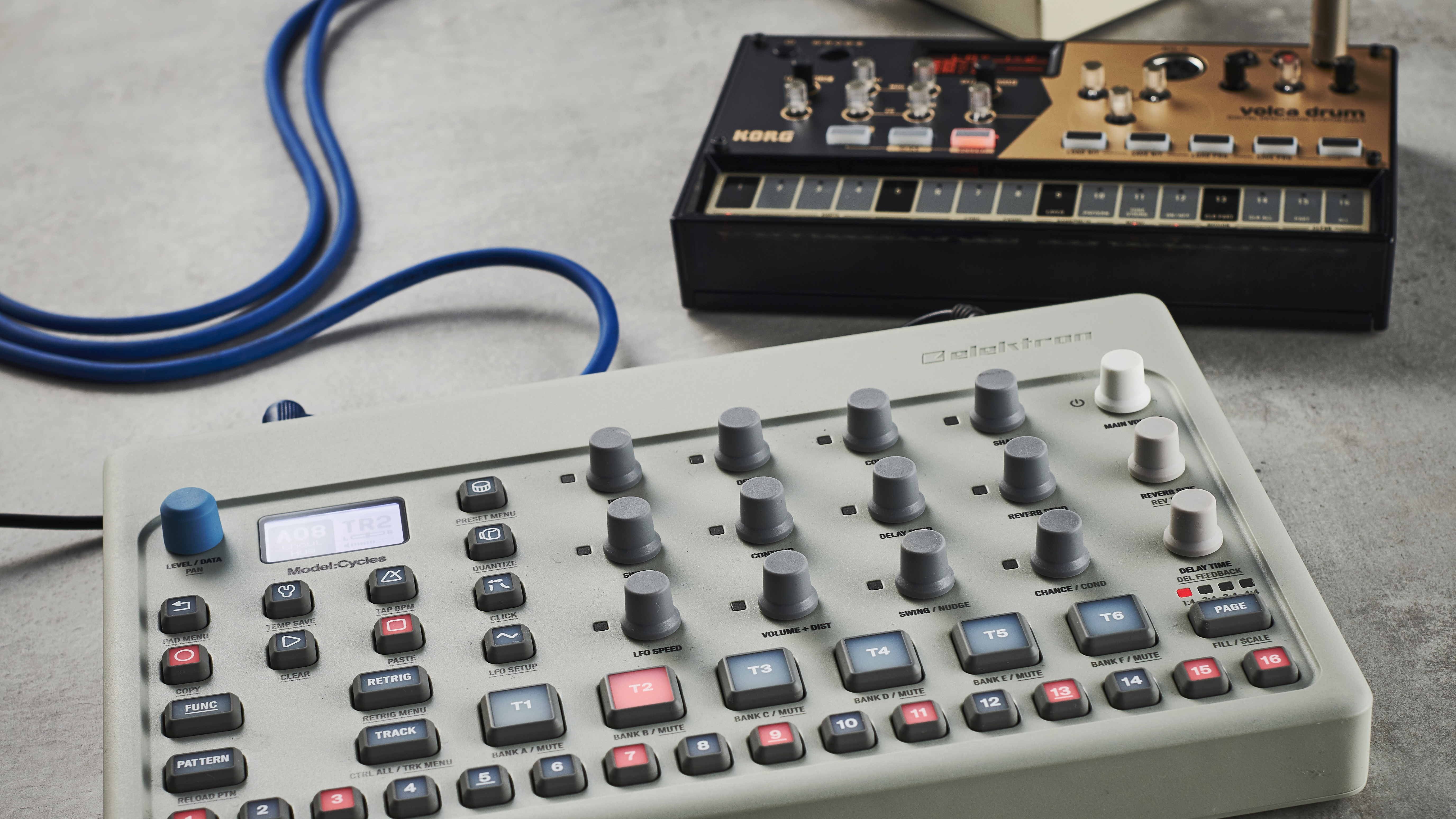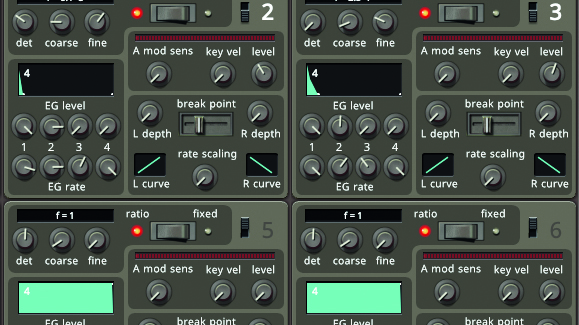How to make electronic drum sounds using alternative synthesis methods
Let’s look beyond subtractive synths and straightforward sampling to find tools that create weird, ear-catching and thoroughly modern drum sounds

In the electronic music realm, there are three ways to create drum sounds – synthesis, sampling or recording. The latter will always result in the most ‘authentic’ percussion parts; even with the immense power of modern sampling technology, for realism there’s still no beating a skilled drummer at a well-recorded kit.
Here, we’re turning our attention to the other end of the spectrum, foregoing realistic sounds in favour of weirder, more creative percussion.
What synths and samplers lack in realism when it comes to creating drum patterns, they more than make up for in creative potential. Once you move away from attempting to replicate traditional percussion sounds, there’s no limit to how weird and unusual your sounds can become. As powerful synths and effects have become cheaper and more accessible, it’s become easier than ever for producers to step away from using the same old sounds and begin to push the boat out when it comes to sound design.
Generally speaking, classic drum machines tended to use a mixture of simplistic sampling and subtractive synthesis to create drum sounds, and these remain the go-to paradigm for a lot of electronic music today.
The appeal of one-shot sampling as a source for drum sounds is pretty obvious – it’s incredibly simple in a modern DAW to drag and drop a sound for instant playback, and with the wealth of samples readily available online, almost any drum sound you can think of is readily available.
Similarly, subtractive synthesis remains an appealingly simple way to synthesise percussion sounds. The fundamentals of doing so are pretty straightforward: take a simple source sound, such as a sine wave for kicks or toms, or a noise generator for hats and snares, then shape its percussive qualities using short pitch sweeps and tight amp envelope or filter modulation.
Sure, there’s little reason not to use these straightforward approaches for drum creation, but from a sound design perspective it can be both fun and inspiring to branch out into less traditional realms every now and then.
Want all the hottest music and gear news, reviews, deals, features and more, direct to your inbox? Sign up here.
On the software front, most modern ‘power synths’ let users combine multiple approaches to create sounds that use a mixture of analogue-style synthesis, sampling and approaches such as FM, additive, wavetable or granular synthesis. A plugin such as Arturia Pigments, Kilohearts Phase Plant or NI’s Massive X, for example, will let users layer multiple sound source and apply audio-rate modulation to create complex timbres that can work great for percussion.
On the hardware front, there are now numerous affordable beatmakers on the market that opt to forego or adapt the traditional synth/samples template resulting in a more unique sound palette.
Alternatively, pushing the effects envelope offers another route to weird and modern drum sounds. This is particularly true when making use of modern DAWs’ abilities to stack multiple processor types and modulate effects for unusual movement.
Alternative approaches
Beyond straightforward subtractive - or virtual analogue - synths, the most common forms of synthesis found in the modern producer’s toolkit are frequency modulation (FM), additive, wavetable and granular synthesis. Each approach has its own distinct qualities that can be brought to use for percussion design and, while some of these can seem daunting at first glance, most of the basic principles of subtractive drum design are entirely transferable. Let’s explore them one-by-one.
FM synthesis
FM synthesis and its various siblings (such as phase distortion or phase modulation) are arguably the most unfairly overlooked tools for percussion synthesis. As we explore in the tutorial below, by making use of individual envelopes for each operator, the standard DX7-style approach to FM synthesis is basically the perfect percussive toolkit. It’s great for sounds with a powerful low-end punch, as well as metallic and ‘icy’ tones.
The reason we rarely think of FM synths as a drum design tool is probably because they’ve traditionally been rather inaccessible; programming the DX7 and its close siblings involved a nightmare of menu diving that could only appeal to the most dedicated sound designer. Fortunately, there are plenty of modern tools that make things far easier, such as modern classic plugins including NI’s FM8, Ableton Operator or the free DX7-clone Dexed.
In the hardware realm too, beatmakers are beginning to catch on to the appeal of FM sounds. You can find simplistic versions of FM synthesis in Arturia’s DrumBrute Impact and, thanks to a recent update, Roland’s TR-8S. For something more complex, check out Elektron’s killer Digitone and its drum-centric sibling Model:Cycles.
Additive synthesis
Unlike subtractive synthesis, which starts with a base sound and then removes frequency content to shape it, additive synthesis builds sounds from the ground up by layering simple ‘partials’ - basic sinewaves that can be stacked to build up harmonic content. Because of this, additive synthesis is capable of creating far more complex and unique sounds than subtractive approaches.
In the electronic music realm, additive synths are probably most closely associated with the complex, modern basslines found in dubstep and drum & bass. They can be great for percussive tones, too - for designing harmonically complex perc sounds such as timpani-like tones and generally oddball hits that don’t sound like anything else.
For some of the best examples of additive synthesis in action, check out the work of Errorsmith, the lauded Berlin producer and DJ who also designed one of the best known additive plugins, Native Instruments’ Razor. His excellent 2017 album Superlative Fatigue is littered with weird hits that sit somewhere between the realms of synth and percussion. You can find similar tones to dissect for yourself in Errorsmith’s own bank of presets included with Razor.
Another additive tool to consider is Logic’s Alchemy synth. Alchemy has a resynthesis capability, whereby users can load sounds into its engine and have it ‘recreate’ the harmonics using either additive or spectral resynthesis. While the results of this can be hit-and-miss, it can be an inspiring way to experiment with drum and percussion samples. Try importing straightforward drum sounds, then using Alchemy to edit them further to add or remove frequencies you do or don’t want. You can then process sounds further using various onboard effects.
Granular and wavetable synthesis
While different in their approaches, granular and wavetable synthesis are similar in that both make use of sampled material as a source for synthesis-like sound generation. What both have in common is that they work best when you modulate their parameters to add variety and movement.
Because of this, they aren’t always the best for ‘core’ drum sounds such as kicks and snares, which rely on steady weight and power (although given the right source wavetable, the likes of Massive X or Pigments can still handle these sounds well).
What granular and wavetable synths are great for is adding textural layers of ‘noise’ or weird harmonics above otherwise static drum sounds. Alternatively, they can be great for textural beds, ghost notes and long, cymbal-like sounds.
Creating percussion sounds with FM synthesis
The free plugin Dexed emulates the classic DX7 synth engine but is far easier to program. Let’s use it to shape a custom kick.
The classic DX7 approach to FM synthesis uses multiple sine oscillators (known as operators in this context), which can modulate one another to create complex timbres. Since each operator has its own amp envelope, it provides a great toolkit for shaping punchy percussive sounds.
Here we’re going to use a three-operator setup. Operator 1 is our fundamental sound – the carrier – while operators 2 and 3 are used to modulate it. By adjusting the decay times and levels of ops 2 and 3, we can use them to shape our sound’s ‘attack’ stage.
Starting from an Init preset, we need to select an algorithm with ops 2 and 3 separately modulating op 1 – we’re using algorithm 16. We’ll leave the level of ops 4, 5 and 6 at zero, so we can ignore these for now or switch them off completely.

Step 1: Operator 1, the carrier, is our fundamental sound. We set its ratio to 0.5 for a low bass tone, but higher ratios can be used for toms or other perc sounds. Its envelope acts like our overall amp envelope - use it to shape the length of the overall sound.

Step 2: Ops 2 and 3 alter the op 1 sound. Using envelopes with quick decay and no sustain means they only affect ‘attack’. Experiment with their frequencies and level - higher ratios impart more upper frequency content, and detune makes their effect harsher and less melodic.

Step 3: As with the DX7, Dexed has a global pitch envelope. Experimenting with this can add subtle or extreme pitch sweeps, further adding to the percussive quality of the sound.
Future Music is the number one magazine for today's producers. Packed with technique and technology we'll help you make great new music. All-access artist interviews, in-depth gear reviews, essential production tutorials and much more. Every marvellous monthly edition features reliable reviews of the latest and greatest hardware and software technology and techniques, unparalleled advice, in-depth interviews, sensational free samples and so much more to improve the experience and outcome of your music-making.
